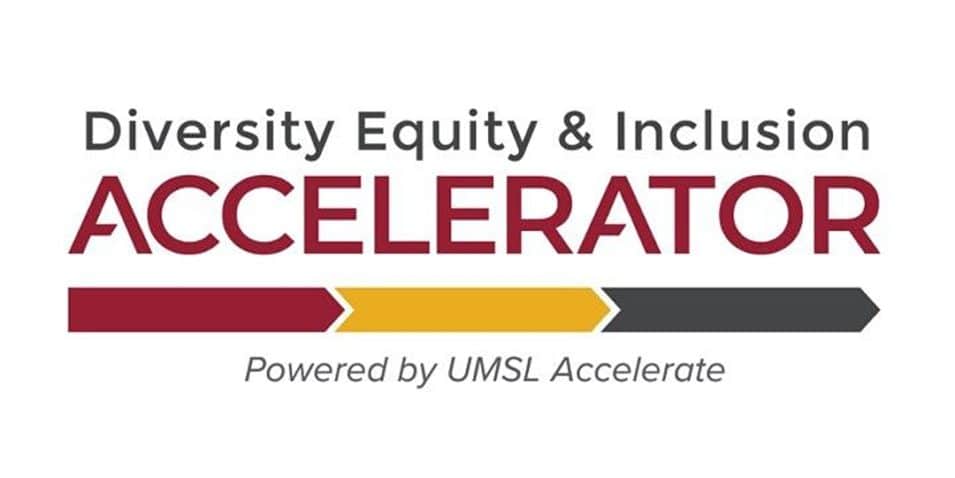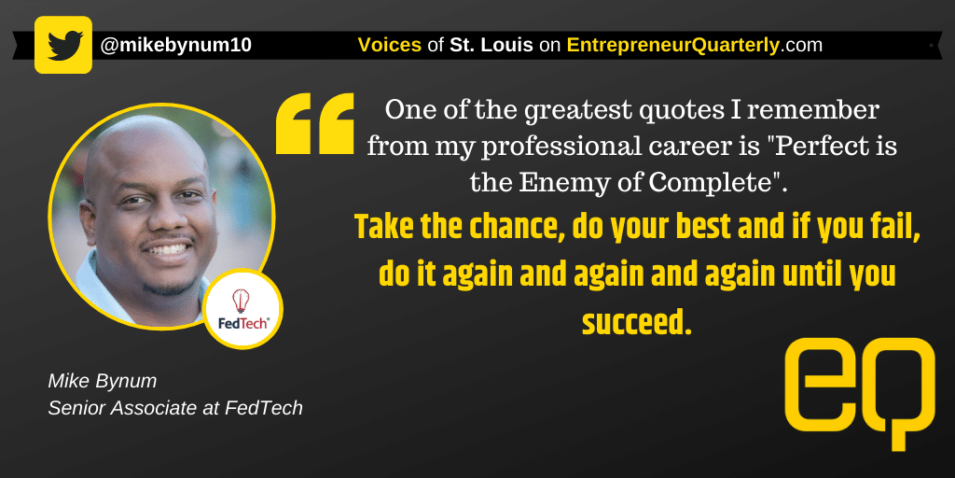
I Love This Radical Approach To Workforce Development
Entrepreneur Quest Student Accelerator Competition, the first ever collaboration of universities statewide, got off to a phenomenal start.
Yesterday, I was lucky enough to be a judge for the first round of the UMSL Entrepreneur Quest, a University of Missouri System wide student entrepreneurship competition to win $30,000. It was a fantastic event and I was really impressed with every single one of the sixteen 3-minute startup pitches I heard.
Personally speaking, I found that hearing the fledgling founders present their ideas reminded me why teaching entrepreneurship is such important work. Entrepreneurship is the only way we can simultaneously investigate the values of the culture we live in now, while putting forth the suggestion as to the culture we would like to live in.
I really commend UMSL Accelerate and the statewide Universities’ collaboration program for providing their students with these opportunities. As an outside observer, it was absolutely wonderful to see founders of all ages and from all ethnic and social backgrounds standing for creating a company they believe in. Truly moving.
In empowering their students to create their own companies, UMSL is standing for the possibilities of workforce development in a radical new way. It’s nothing short of a beautiful vision.
Here are some tips and observations that I wanted to share with the fledgling founders at the event:
Values are important in new companies. What you may lack in business experience, you can easily make up for in energy. When you project the values that you want to build your business on it makes it easier for investors to deliberately overlook any possible miscalculations you might have in the core business plan. Use this to your advantage!
In reality, no startup founder can ever have fully grasped the opportunity they are pitching to investors. Understanding the gap between your vision and the reality is exactly the role that investors want to play, so leaving some questions open, or not having all the answers can actually create more opportunities for collaboration – and thus more interest.
Mission driven founders are really investable. The companies that included a personal story in their presentations made more of an impact on the audience not because they elicited sympathy but because their “mission” answered a fundamental question which is always at the back of an investors mind: “why?”
Knowing your “why” and being able to communicate it succinctly and powerfully answers another question that is not always apparent when you are pitching investors. Although you are being given the opportunity to pitch your idea, working exactly how you imagine it to work, an investor is actually making other almost opposite assessments.
As you’re presenting, they’re actually thinking through questions such as what happens if this specific idea doesn’t work? And the answer they are looking to find is clarification on whether they can trust you to adapt to problems, issues and setbacks. When you have a strong “why,” you implicitly signal to investors that you are ready to adapt to find the right solution, whatever it is. Like values, having a mission helps establish governance even if your first plan falls through.
Invest a little to build your prototype. If your company intends to build a physical product, then do whatever you can to build some kind of prototype. Whatever your widget it is, one thing that investors are looking for is whether you can get an idea out of your head and into the world. The most basic prototype is the best way to prove you can do that.
Visuals alone such as technical drawings, diagrams and sketches, are often too difficult to understand to the untrained eye. That’s your specific talent and skill, and it’s unlikely your audience has the same abilities – which is why you’re standing in front of them, pitching! If you’re planning to build a physical product, then anything that helps your investor understand it in a tactile sense will improve your chance of winning their interest.
You don’t have to break the bank to create a physical object and it certainly doesn’t have to work perfectly. Makerspaces such as MADE or Arch Reactor, will help you find hobbyists who will help you put something together quickly and cheaply – whether that’s help lazer cutting a wooden concept version or 3D printing a prototype.
Get super ridiculously specific about who will buy your product. Any setbacks in the early days of your company can be put down to that fact that you probably didn’t define your target customer enough.
When pitching a startup, there’s always the temptation to make your solution have as broad an appeal as possible. After all, investors tend to want to invest in startups solving big problems in large markets. Yet imagining exactly who your buyer is and conceptualizing the “why they buy” moment is critically important.
The best pitches I heard made very specific claims about the use cases of their product among their target customers. For example, car fans at automotive trade shows, local designers with no retail outlet, highly skilled and creative people with physical disabilities.
The added dimension of specificity may almost sound like the product or solution you are selling is less glamorous, however, The more completely that you can define the needs they have and their needs that you specifically solve, the quicker it is for an investor to understand how you intend to generate a return. As soon as everyone knows how to get one buyer, you have an actual business. Until you have that first buyer, you still just have an interesting idea.
You Have to Aim For The Stars to Land On The Moon
To the students presenting, I salute your courage, clarity and determination to consider pursuing your own career path.
The conviction that you can teach yourself is the ultimate gift a higher education can give you; and maybe the world of work needs to adapt to you rather than the other way around. So, congratulations for embracing and assimilating the real lessons you’ve been learning in your studies.
And while you may fantasize that your startup company might be “the next” Facebook, Google or Amazon (which is totally understandable; we all do it), you have already engaged in a radically important act just by pitching your concept. To dare to create your own job is a huge first step towards making a difference in society.
Here’s why: even if you never win the levels of investment that other startups become famous for, should you fall short of your expectations and only go on to build a successful “small” business (under 500 employees, under $7.5M annual revenue – hardly small!); you will actually become one of the biggest statistical contributors to jobs and stability in society. By contrast, the economic impact of giant tech companies is over-rated. Small successful businesses have a more immediate and positive social impact than the gigantic enterprises that insist on “making the world a better place.”
So take heart, there is no achievement too small on this road you’ve taken. By creating a company, and potentially becoming your own employer, you are creating deeply meaningful work and grounding new values that our future society could live and work by.





